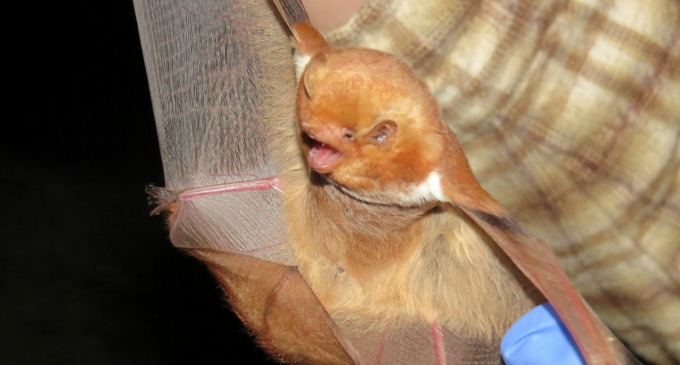Texas is home to 33 different species of bats. Of these 33, the Eastern red bat is one of the few who is a permanent resident of East Texas. Eastern red bats are forest dwelling, solitary bats and are one of the few North American species that roost in the open in trees. They do not use sites such as caves, mine tunnels, or similar sites often frequented by other species. Roosting sites are common in tree foliage or Spanish moss where the bats are concealed as they resemble dead leaves.
Eastern red bats are considered a year-round resident of eastern Texas but may only be a summer migrant in the western part of the state. These bats winter in southern United States, Mexico, Bermuda, the Antilles, and perhaps even farther south.
No Mingling During Migration
Photo: Flickr/Logan Ward
According to Texas Parks and Wildlife, the different sexes are thought to migrate in separate groups and may actually travel with other bat species. Many red bats have been recorded migrating during the day from August to October. Some have even been noted flying over the Atlantic Ocean!
The Early Bat Gets the Beetle
Photo: Flickr/Brian Wulker
Red bats are often the first bats to emerge after sunset, typically flying high and eventually coming within 6.5 to 13.1 feet off the ground as darkness approaches. They have long narrow wings adapted for rapid, poorly maneuverable flight, yet are willing to land on light poles to catch moths, and may even catch some prey from the ground. They feed most actively during the first several hours after sundown, but nursing mothers may feed all night.
These bats are thought to travel at least 2,000 to 3,300 feet from day roosts to feeding sites and may return to the same feeding grounds on consecutive nights. Red bats eat mostly moths and beetles, but also dine on planthoppers, leafhoppers, and spittlebugs. When possible, they actively select larger prey. On especially warm winter evenings, males emerge from hibernation in order to feed, sometimes even in mid-afternoon, though females apparently do not.
To learn more about the Eastern red bat, visit the Texas Parks and Wildlife website.





